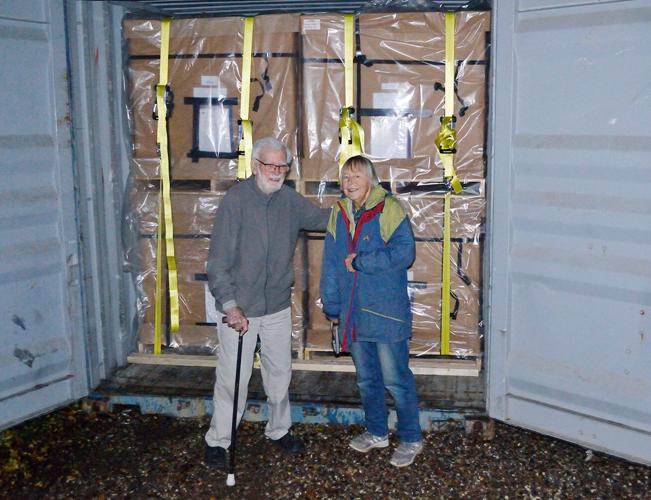An invaluable gift came to the University of Alaska Museum of the North (UAMN) last year — the Erritzoe collection from the House of Bird Research in Denmark.
Dr. Johannes Erritzoe has been a research affiliate of the University of Alaska Museum (ornithology) for more than 20 years, and his bird collection is an amazing scientific resource. Developed over decades of careful work, his collection has already been the basis for many scientific articles. Its importance and use will grow considerably now that it is in Fairbanks, because historically it was not online or in a public lending institution. The scientific gains for the museum, for the University of Alaska Fairbanks, for this collection and for ornithology are considerable.
The Erritzoe collection comprises more than 8,800 meticulously prepared bird specimens and is highly complementary to the current UAMN bird collection. Many Alaska bird species have a Holarctic distribution, found all around the North. Many more are the easternmost representatives of Eurasian populations and their close relatives. As such, the Erritzoe collection, most of which is from the northwestern Palearctic, a region stretching across Eurasia and northern Africa, is an important scientific addition to current UAMN holdings. In short, we cannot understand the similarities and unique aspects of Alaska birds without using complementary material like this — much of which we’ve had to borrow in the past to work in the appropriate comparative framework. This collection is also a fantastic research resource for the study of northern birds and the ways in which climate change affects them.
In addition to being an important northern Palearctic collection, the Erritzoe material also includes many rare species from birds that died in captivity. This kind of specimen salvage provides important research opportunities on species that are rare in the wild. Modern specimen material of these species is also usually rare in collections, causing them to be in high demand by researchers.
Collections Manager Jack Withrow and I went to Denmark to pack the collection carefully into a 20-foot shipping container for surface shipping to Fairbanks. The permitting and moving of such a large collection was especially challenging, and we thank the many people both in Denmark and the United States, who helped us accomplish this task. The sea voyage was long, and we nervously watched its progress online daily. Fortunately, the “Margrethe Maersk” scooted through the southern Red Sea and the Gulf of Aden before the Houthi’s missiles caused a closure of that route. This was a close thing — she made it through with hours to spare. It was a huge relief when the container finally arrived in Alaska. Our next steps are to get the collection catalogued, integrated, and online so that it is widely available to researchers.
The Erritzoe collection move is bittersweet. On the negative side, we’re seeing an accomplished ornithologist hanging up his spurs after a lifetime of high-quality work. On the positive side, the gold mine of specimens and associated data that he’s developed has a bright future as scientific fodder for many researchers going forward.
Family programs from the UA Museum of the North are focusing on trees during April. Early Explorers, for children 5 and younger with their caregivers, will be held on April 11.
Family Day: Trees will be held at the museum on April 19 offering a chance for all ages to explore. Kids 17 and younger are admitted free on Family Days. Learn more at bit.ly/uamnfamilydays.
The museum will also be at community events this month including the UAF Science Potpourri on April 12 at UAF’s Reichardt Building and the Spring Migration Celebration at Creamer’s Field on April 26.
The museum’s winter hours are from 9 a.m. to 5:30 p.m., seven days a week. For more information about the museum’s collections, programs, and events, visit www.uaf.edu/museum or call 907-474-7505.
Kevin Winker is curator of birds at the University of Alaska Museum of the North.














